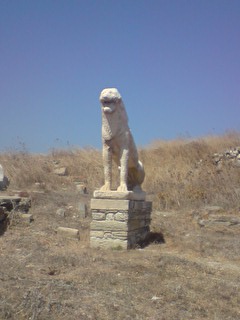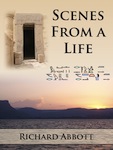I read quite a lot of historical fiction, skewed towards the ancient near East (ANE) since that is also the era that I write about. Along with that, I read quite a lot of fantasy or science fiction as well. Both genres seem to attract a lot of writing where both male and female characters are squeamish and culturally embarrassed at the thought of sex.
Now, for the ANE at least, and most likely for a much wider spectrum of places and times, this is a retrospective projection of relatively modern attitudes, rather than an accurate portrayal. After all, most people throughout history have lived in small houses where parents and children share a single room. Their survival depended on a good knowledge of animal husbandry and an awareness of natural cycles. Sex was not a mystery, except in the very human sense that intimacy with another person is always a mystery.
But as well as that, ancient texts spell out the same picture. For example, biblical Hebrew does not have a word meaning “virgin“. Now, it does have a word which later translators chose – and often still choose today – to render as “virgin” – namely, bethulah. But the best analysis of its original sense was “a woman of an age where she could be married but is not” rather than “a woman who has never had sex“. The very fact that a handful of biblical passages go to great lengths to expand the description with extra phrases – for example Rebekah is described in Genesis as “very beautiful, a bethulah; no man had ever lain with her” – should alert the careful reader to the fact that bethulah of itself does not necessarily suggest innocence.
I have read suggestions that a translation which would convey better meaning to a typical modern reader would be “teenager“, although that carries an idea of a specific age band which is foreign to the original. In former days, perhaps “nubile” would have worked, but today that seems to carry the idea of wilful cheerleader-style flaunting of sexuality.
Basically, we do not have an English word which works quite right, and translation choices seem mostly to be based on later Jewish, Christian, or general social views on how women around and after puberty ought to behave. We are faced with a translation based on a sense of morality rather than linguistics.
Egyptian scene – adoration of Anat (British Museum)

Considerably north of Israel, on what is now the coast of Syria, was the city of Ugarit. This was sacked and abandoned soon after 1200BC, and is a rich source of textual and archaeological material. One of the goddesses celebrated there, Anat, is clearly adult in her actions, and in her authoritative status within the pantheon. A title used frequently for her is betulat (a variant of the Hebrew word). Anat has no husband, betrothed partner, or regular consort. The texts are a little ambiguous as to whether she engaged in sex, but are commonly read to indicate this. Now, whatever your personal feelings about gods and goddesses in the ancient world, they certainly mirror something normative in and representative of their society. So here we have a word-picture of an adult woman, probably sexually active, who is nevertheless referred to as betulat.
Down in Egypt, a considerable number of love poems have been found, mostly from the New Kingdom (roughly 1550-1100 or so BC). The basic presumption of the poems is that young men and women were able to interact with one another and explore one another’s sexuality. There was a significant gap between puberty and settled relationships or marriage. Family and social context provides an obstacle to their interaction, but not an insuperable one. Was all this just wishful thinking on the part of frustrated scribes? That is possible, of course, but it seems more likely that it reflects actual practice for some parts of society.
The voice of the swallow twitters away –
this is his cry:
“The land is dawning! Get up on your way!”But don’t, small bird speak thus:
I found my brother in his bed,
my soul with sweetness overflowed.
So all in all, the available evidence from the ANE in the second millennium BC is that virginity was not a status to be guarded or prized in a young woman in the rather possessive way done later on, and that sex was not a source of embarrassment. That certainly came along at a later date, at least for some social groups, but is not a universal feature of societies through history. Pregnancy would be a constant background risk, but does not feature as a serious social threat for either men or women: greater social stigma was associated with childlessness. But that is a topic for another day!


 Historical fiction faces slightly different problems, though, and I want to tackle these over a few blog articles, especially as they are closely related to the translation of historical texts. For one thing, many of us who write about the past are also writing about people speaking another language – even the English of Chaucer’s time is quite different in certain ways from modern English. Along with a lot of other people, I write about a place and time where the characters’ language was scarcely related at all to English.
Historical fiction faces slightly different problems, though, and I want to tackle these over a few blog articles, especially as they are closely related to the translation of historical texts. For one thing, many of us who write about the past are also writing about people speaking another language – even the English of Chaucer’s time is quite different in certain ways from modern English. Along with a lot of other people, I write about a place and time where the characters’ language was scarcely related at all to English. Time for a review amongst all the excitement of
Time for a review amongst all the excitement of 





 Now, it is clear from occasional comments in the book that the plot draws from traditional Indian literature, in particular the Mahabharata. My knowledge of this is quite scanty, but fortunately I was able to get some pointers from Indian friends. I suspect that a greater familiarity with both the history and myth of India would open up other dimensions of this book which remained largely opaque to me. Even without that, though, there is enough here of humanity’s common sources of comfort and conflict that the story hangs together well.
Now, it is clear from occasional comments in the book that the plot draws from traditional Indian literature, in particular the Mahabharata. My knowledge of this is quite scanty, but fortunately I was able to get some pointers from Indian friends. I suspect that a greater familiarity with both the history and myth of India would open up other dimensions of this book which remained largely opaque to me. Even without that, though, there is enough here of humanity’s common sources of comfort and conflict that the story hangs together well.